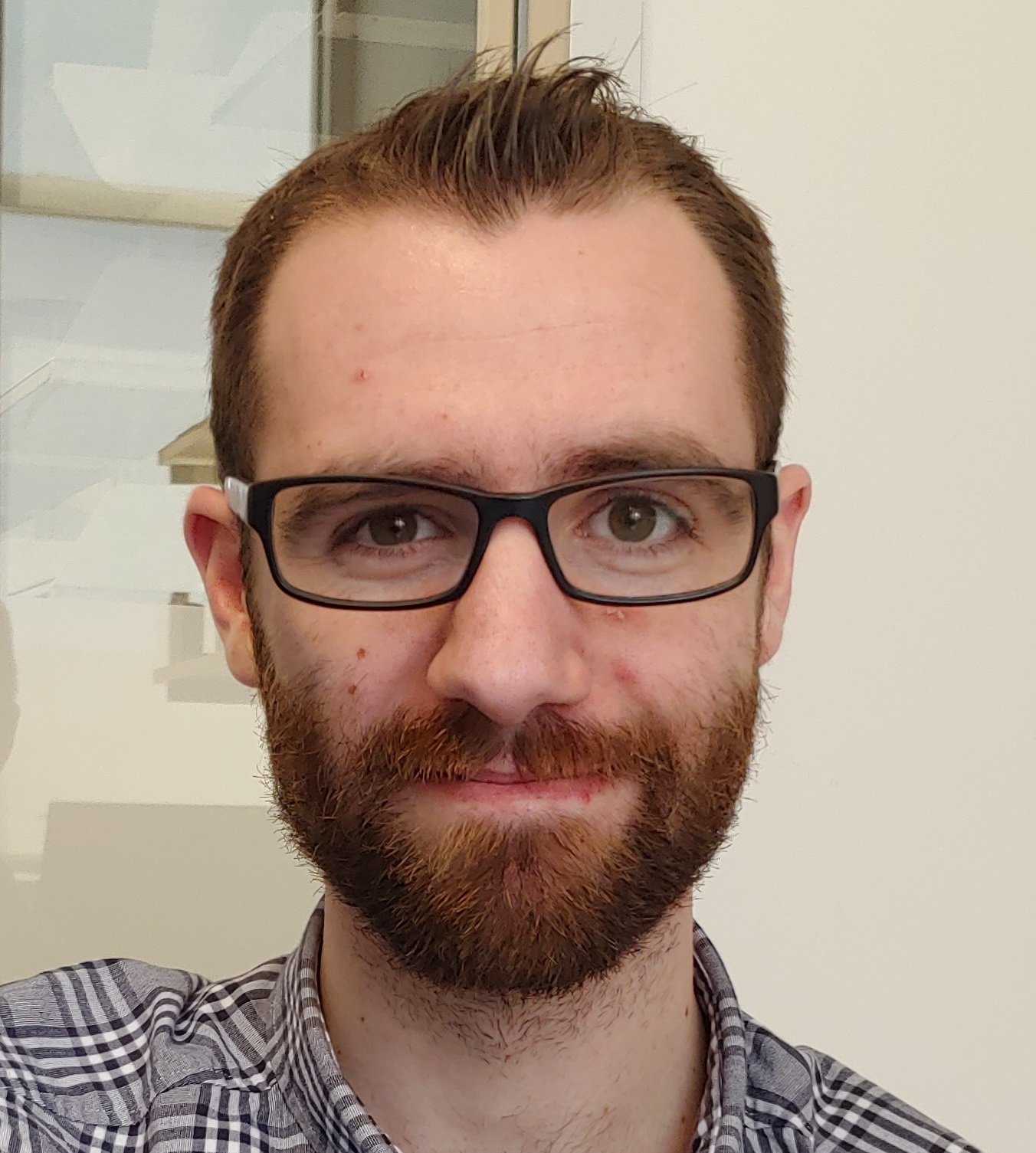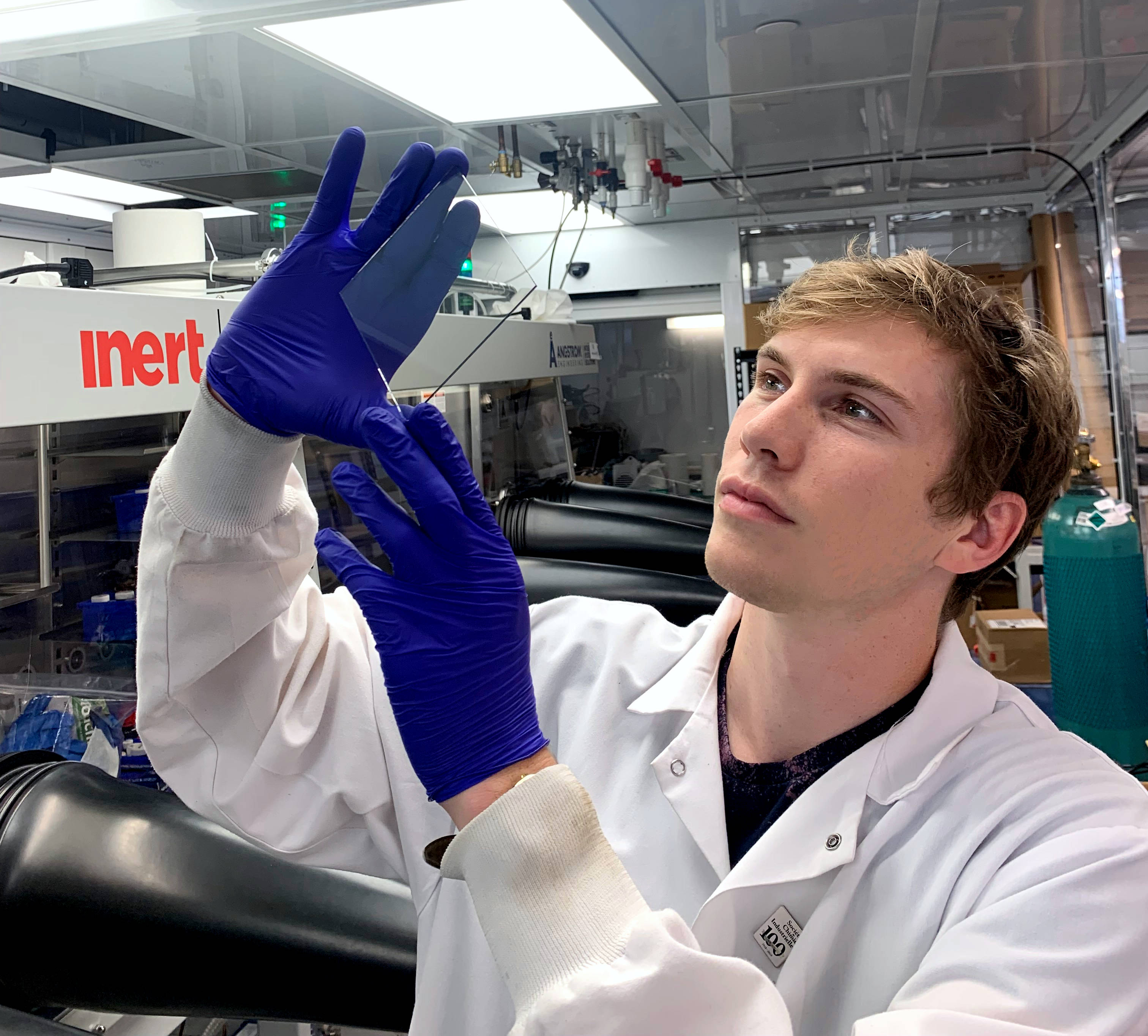Two NYU Tandon students are headed to prestigious fellowships at national labs
Steven Farrell and Ed Sartor, both in the Department of Chemical and Biomolecular Engineering, won recognition for their forward-thinking proposals.
The U.S. Department of Energy’s Office of Science is charged with conducting the foundational research behind solutions to some of the nation’s most complex challenges — work that requires a wide pipeline of skilled scientists, engineers, and entrepreneurs. To that end, since 2014 the Office has run a fellowship program that taps the country’s most talented graduate students to tackle mission-critical research and help keep the U.S. at the forefront of discovery and innovation.
This year, two Tandon students were chosen from a vast pool of applicants, based on peer review of their research proposals by external scientific experts. Read more about them and their work below.
Steven Farrell
Thesis Advisor: Assistant Professor of Chemical and Biomolecular Engineering Ayaskanta Sahu
National Lab: Brookhaven National Laboratory (Upton, New York)
Describe your research and its potential application: I began graduate studies after working in industry for several years as a process development engineer at a company whose aim is to reduce transport emissions and decarbonize chemical production, and my research still has a green focus. My proposal to the DOE involved gaining a deeper understanding of the relationship between the structure of doped transition metal dichalcogenides and how doping improves their catalytic properties and selectivity in upgrading biofuels from biomass. Valorizing biomass into biofuels is a critical step towards eliminating our fossil fuel dependence and reducing CO2 emissions, so if I had to sum up my work in the simplest possible terms, I’m trying to turn biomass, such as parts of wood pulp and paper waste, into useful things and understand how to make better catalysts for this process.
What are you most looking forward to as a Fellow?: I grew up just a few miles away from Brookhaven, and if you’ve ever even driven by the Lab, you can imagine how it would spark the imagination of a kid interested in science. You could even say getting the chance to work there is a childhood dream come true. Given that it’s one of the most advanced synchrotron facilities in the world, with equipment that allows for viewing chemical and electronic processes in unprecedented detail, it would actually be a dream for any materials engineer.
Ed Sartor
Thesis Advisor: Associate Professor of Chemical and Biomolecular Engineering André Taylor
National Lab: National Renewable Energy Laboratory (Golden, Colorado)
Describe your research and its potential application: My proposal was inspired by Nanospray, a startup I co-founded to help address a core issue plaguing the American solar industry: how to better manufacture the back contacts of Cadmium Telluride solar panels. The issue is that Cadmium Telluride photovoltaics are reaching such high efficiencies that the interfaces that form from the different layers in a device are having an outsized impact on the characteristics of that device. For other materials, like silicon and gallium arsenide, we have a much clearer picture of how these interfaces behave chemically and electrically, but for cadmium telluride that fundamental picture is still a little hazy, and is limiting the development of better devices. I hope to use NREL's cutting-edge processing and characterization tools to interrogate these interfaces, and understand how they can be manipulated using low-dimensional materials like hexagonal boronitride or molybdenum disulfide.
Gaining that understanding will benefit companies working within the solar industry, like Nanospray, which was recently declared a finalist in the American Made Solar Challenge, co-sponsored by the National Renewable Energy Laboratory. But it could also cut across disciplines and have applications that we’re not even imagining now.
What are you most looking forward to as a Fellow?: I’m particularly excited to be working with scientists at the forefront of the field, Matthew Reese, who manages the thin-film photovoltaics group at NREL, and research scientist Joel Duenow. They’re tops in the field, and I know I’ll learn a lot from them. To be working at the national lab dedicated to renewable energy, nestled in the rocky mountains, it’s a dream come true.


